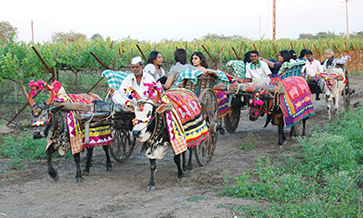People these days are looking for something more approachable and are willing to experiment and explore new trends – for instance, sparkling wine and the growing popularity of the Rose style of wine. There’s also a keen inclination towards green, sustainable, cruelty-free, ethical products.
The pandemic has encouraged a switch to at-home consumption of wine. The rise of health-conscious consumers and the global wellness trend has caused many to re-evaluate their alcohol consumption and choices. This shift has created an array of new opportunities for brands, especially low-ABV wines like Rose and sparkling wine.
The space constraints and high rentals often make the on-trade promotion a little expensive. Plus, there is always competition from other alcoholic beverages and wine tends to be overshadowed.
Wine prices in some restaurants are exorbitant and definitely need some tapering to attract more consumers. More wine brands need to be listed ‘by the glass’, so that consumers can taste and buy.
Wine education
We are very proud to be the flag-bearers of all things wine in the country. We help people understand wine better with our enriching tours and tastings and digital events.
In 2019-20, we had more than 3,00,000 visitors to our wineries in Nashik and Bengaluru. Most visitors are aged 25-50 years; but we have an amazing range of families with young adults and senior citizens visit us regularly.
The bulk of visitors come from Mumbai; but there is also a growing proportion of visitors coming in from Delhi, Gujarat, Chennai, etc.
We have two luxury resorts – The Source at Sula, and Beyond by Sula. Hospitality contributes around 10% of our overall revenue, but far more in terms of our profitability!
With the requisite government permissions in place, we have reopened our resorts, tasting room, and estate visits. In the post-lockdown period, we record an average of 2,000 people over the weekends, who come to experience all things wine with Sula.
For many, it is also the first time, when they try a wine and get educated in wine. I can stick my neck out and say, I believe wine tourism has been the single most important marketing tool that we have deployed to create a wine culture in India.
Wine tourism has helped break the pretentiousness that exists around wine. People are comfortable purchasing and proudly consuming home-grown wines. Our wines have also swept awards internationally – such as the Decanter World Wine Awards and Wine Enthusiast to name a few – which has helped garner global recognition and put Indian wines on the global grape map.
New avenues
There is a need to lower label registration charges as well as taxes on wine across the country. Wine is an agricultural success story in India, supports thousands of farmers and rural employment, and is small-scale compared to spirits and beer.
It deserves much more support from the Centre and states. The states of Maharashtra and Karnataka have shown support with a low tax regime; as a result, the wine industry has blossomed in these states.
There is also an explosion of RTD (ready-to-drink) beverages that makes alcohol accessible for any occasion. Leading the innovation story we launched India’s first wine-in-a-can, Dia Wine Sparkler, in two delicious flavours of red and white wine.
The can speaks convenience and has helped tap in the consumer base that wants to evade the fuss of fancy glassware, cork openers, etc. The response has been great! We think this could become one of the fastest growing segments of our business in the years to come.
Wineries are tapping into younger consumers’ affinity for experiences. Wine has made its way to TV and satellite content streaming platforms on popular web series like Mirzapur.
There is a growing demand in Tier-2 and Tier-3 cities. Wine is no longer a drink for the elite, but is finding its way to common Indian households.














